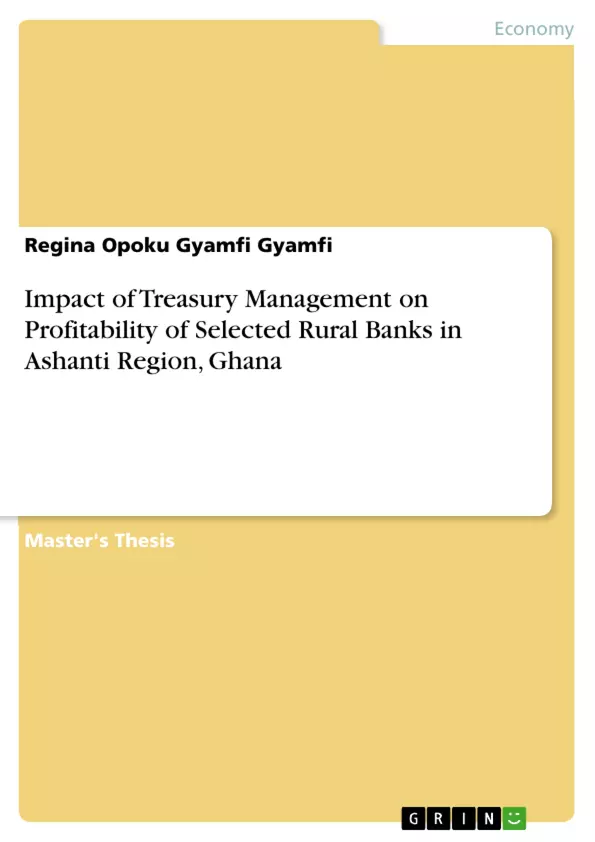This study was conducted with the core purpose of investigating the impact of treasury management on profitability of rural banks in Ghana. Fifteen rural banks operating in the Ashanti Region were selected for the investigations based largely on availability, consistency and accessibility of their annual audited financial reports for the period under study. The study covered a five-year period from 2011 to 2015. Quantitative research design was adopted. Secondary data in the form of treasury management ratios including current ratio, cash to deposit ratio, loan to deposit ratio and loan to asset ratio were extracted. Return on equity (ROE) was used as a proxy for profitability. Data were processed in EVIEWS econometric software and were organized in tables. Random effect panel regression methodologies were relied upon for estimation and analysis of data, along with descriptive statistics. The study reports that current ratio has a positive significant influence on profitability while cash-deposit ratio has negative but insignificant effect. Again, loan-deposit ratio related positively with profitability at insignificant levels, whereas loan-asset ratio impacted significantly negative on profitability. The study recommended prudent management of current assets. Rural banks should ensure that their current assets are always in excess of current liabilities, so that meeting short-term obligations may not pose challenges.
- Arbeit zitieren
- Regina Opoku Gyamfi Gyamfi (Autor:in), 2017, Impact of Treasury Management on Profitability of Selected Rural Banks in Ashanti Region, Ghana, München, GRIN Verlag, https://www.grin.com/document/1128505



